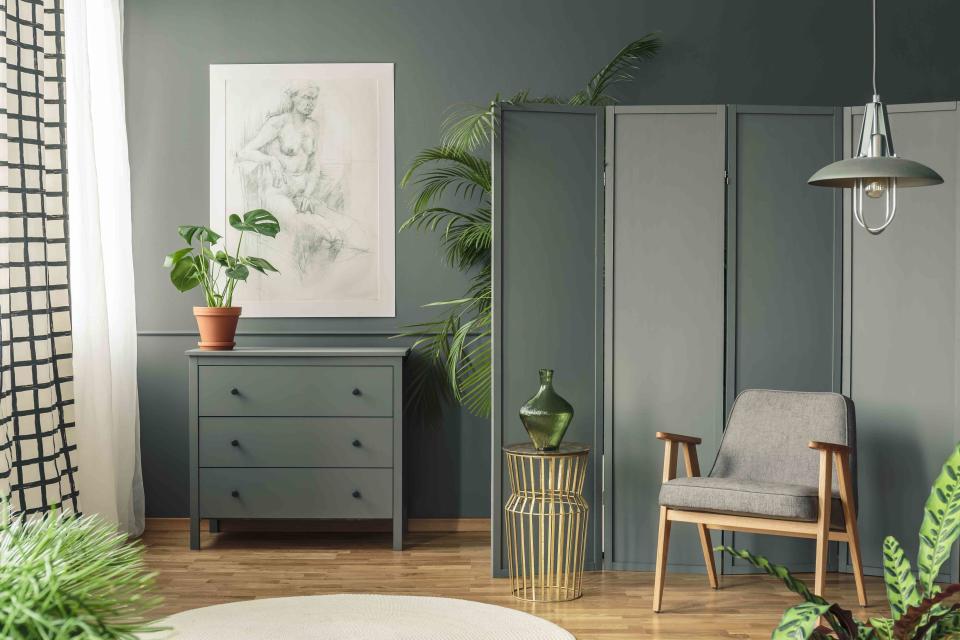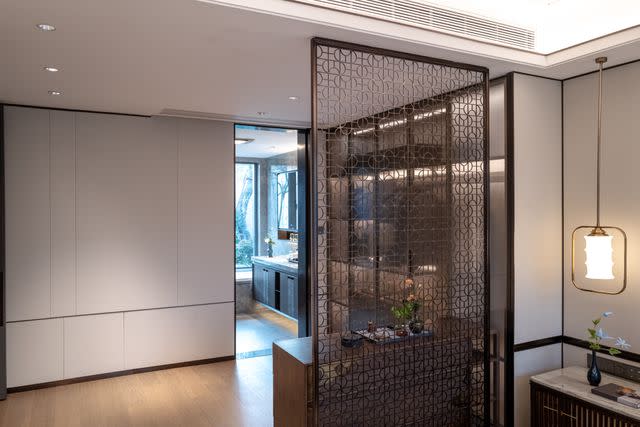Why The Partition Wall Is Making a Comeback
The pandemic revived our need for partition walls, and it looks like they’re here for the long haul.

For years, it seemed like the goal of every major home overhaul was to tear down as many walls as possible—new builds exalted the open floor plan. But as was the case with so many other home design trends, the pandemic changed our perspectives. Our homes became our offices and schools, and we suddenly remembered the value of walls.
As many people have returned to in-person work and school, the need to create a designated site for every activity has lessened a bit. But the appeal of creating some separation in shared spaces has remained—there’s something nice about stepping away from your work desk and closing the door on that part of your life at the end of the day. And while serving dinner in a formal dining room used to seem antiquated, now having an area just for friends and family to gather around the table can feel like the perfect way to make lasting memories.
So, how can you create these special spaces without overhauling your home? The answer just might be a partition wall.
If you’re looking for an easy way to shake up the look and function of your home, partition walls can create a fresh new design without needing to close off entire rooms. We’ve even gathered a few construction-free tips to try this trend. Read on for more information on why you might consider partition walls for your next renovation project.
What Is a Partition Wall, and Why Are They Everywhere Now?
A partition wall is a partial, non-load-bearing wall that creates designated sections in a space without completely closing it off, allowing for flexible and functional rooms. There are several ways you can replicate partition walls, and your exact design will ultimately depend on the effect you’re trying to achieve.
Partition walls can be an excellent solution for people with hybrid work schedules or for families who might need some designated “kid spaces” that are still part of the main living area.
Another part of the appeal of breaking up spaces is that it also makes your larger home a little easier to decorate and work with. When you have a large, square room with no delineation, it can be hard to figure out where to group seating and dining areas, and it can feel like the furniture is adrift. Creating nooks with partition walls can help give each spot a purpose and create a pleasant flow in your space.
How Would a Partition Wall Fit in Your Home?

Before adding a partition wall, you’ll need to assess if it would really be a solution to your design dilemmas.
If you want privacy for an office or a guest bedroom where visitors need their own space, a partition wall is likely not enough. This would be the time to call in a contractor and put up a full, non-load-bearing wall to create a separate room.
However, if you have a multifunctional space or just need to divide things up a bit, then the partition wall makes a whole lot of sense. One way to implement a partition wall is to secure a row of vertical panels to the ceiling—how close together the panels are affects how much the space will feel separated from the main living area. You might also choose to have the panels swivel or work on tracks so you can open and shut them or move them to create more of a modular room effect. This way, you can close the space off when you’re using a nook as an office and then retract the wall to reveal more open space when you’re in entertaining mode.
Some partition walls also incorporate glass to maintain sight lines and allow sunlight to continue through your home while still cutting down on noise and giving a sense of separation. By choosing materials like wood and glass paneling, you can create designated spaces plus an interesting design element.
If you’re not ready for a permanent commitment, or if you rent your home, there are ways to cheat a partition wall, too. You can use tall bookcases to section off space—just make sure to anchor them to the wall if you have small children or rambunctious pets around! This hack is particularly nice for an office or study area. Another solution is to use rice paper or wooden screens as room dividers. You can paint them to match your decor or purchase some with art included to enhance the room’s overall design.
Finally, you can also use curtains to break up the space. If you want to keep things light and airy, choose sheers. To completely block off an area and create something like a movie room, thick velvet curtains will not only block out light but they’ll also help dampen sound.
However you decide to break up your living areas, a little separation can go a long way in creating usable rooms for your whole family to enjoy. And the ability to choose when you need some space to be apart can make the time you spend together that much more enjoyable!
For more Better Homes & Gardens news, make sure to sign up for our newsletter!
Read the original article on Better Homes & Gardens.

